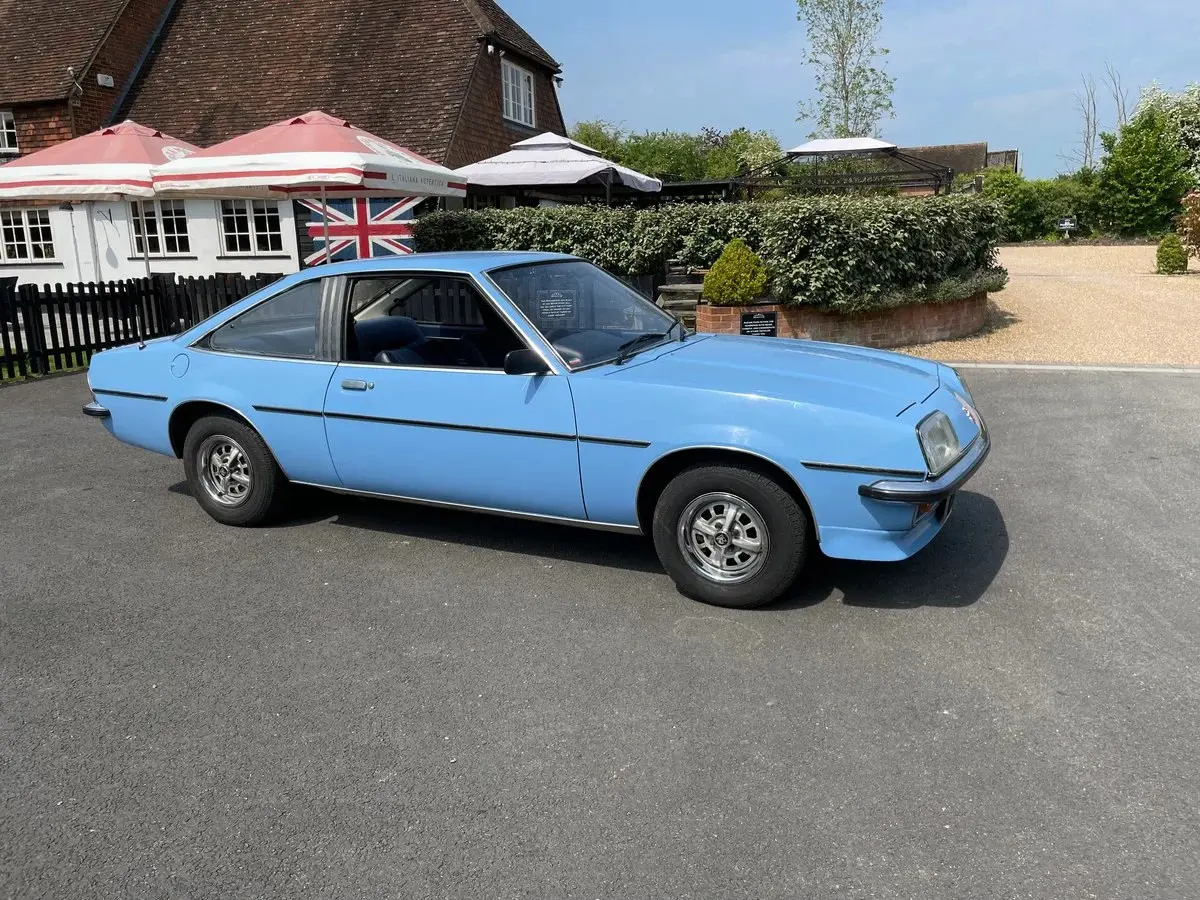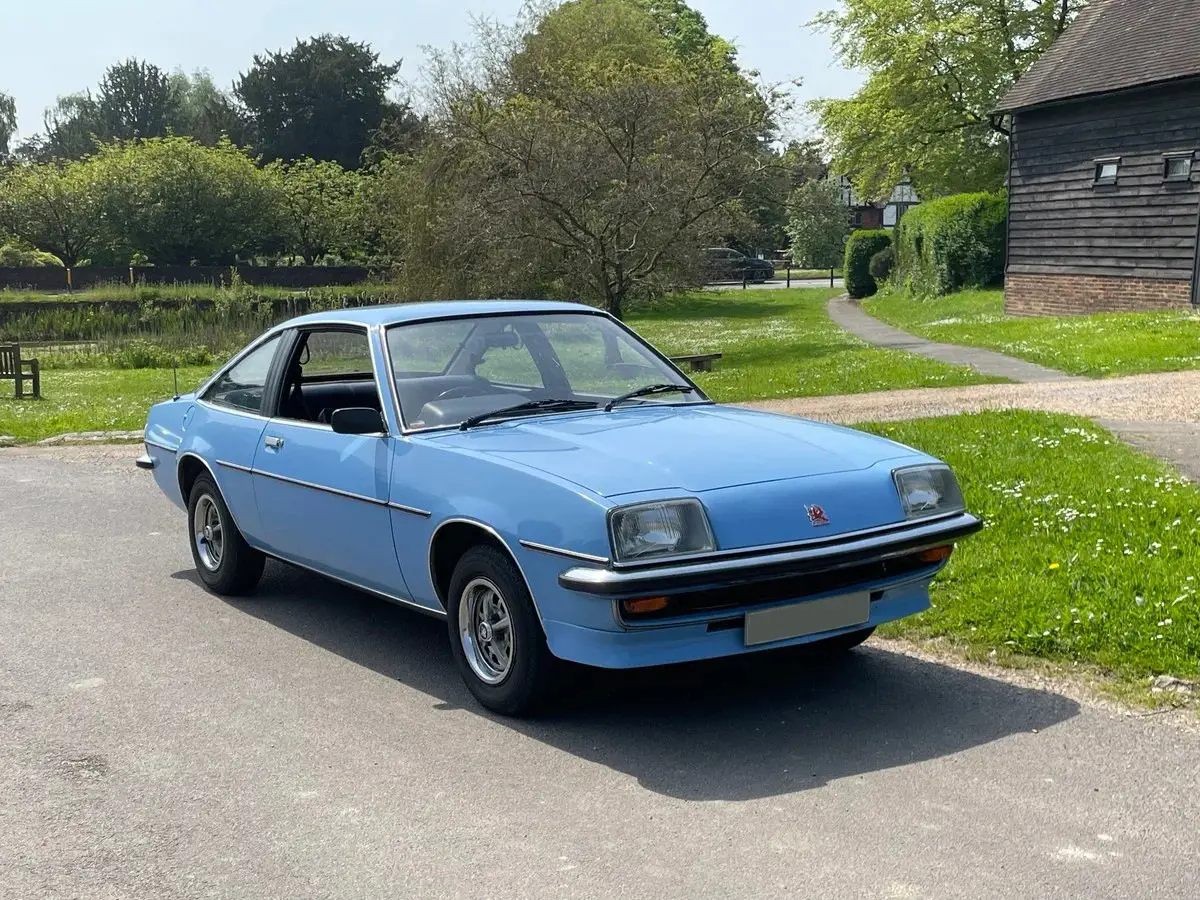ULTRA-SUAVE – THE VAUXHALL CAVALIER 1900GL COUPE
18 October 2024
The Coupe belonged to a relative of my wife, and it was a company car. When she left the firm, the Cavalier was part of the severance package, and she kept it for the rest of her life. The Vauxhall was always well-maintained, with a nearby garage undertaking the MOTs and servicing, and only driven locally. It was also always garaged. As the first owner became older, she found a car without power-steering more challenging, so we gradually took over the driving, and eventually the Cavalier passed to me.

Paul Herrington’s Vauxhall belongs to a select group of cars that cause an enthusiast to not just double-take at a classified advertisement but triple-take in amazement. In 1976, this writer believed the Cavalier 1900GL Coupe was impossibly suave, a car a realm apart from his family’s 12-year-old Wolseley Hornet. It also headed a line-up that, to quote Motor Sport, looked like “going a long way to getting Luton out of its financial rut”.
Vauxhall originally planned to launch the Cavalier in 1976. However, their need for a mid-market car was so desperate that on the 29th of September 1975, they premiered to dealers at Elstree Studios. Patrick Macnee and the Monty Python team were among the guests; sadly, there are no records of anyone saying: “And now for something completely different.”
The Earls Court Motor Show marked the Cavalier’s public debut. The first examples hailed from Belgium, as UK production did not begin until the 26th of August 1977. The Daily Mail ranted: “Stop This Foreign British Car.” Such controversy aside, Car magazine proclaimed: “Tell your company secretary that you have only one choice” – the Cavalier.
The 1900GL Coupe was the flagship of a range dominated by two- and four-door saloons. Motor thought it offered “superb roadholding and handling”, and found their long-term test car “enormously attractive” and getting “admiring glances wherever it goes”. Motor Sport echoed this experience, saying the Coupe’s appearance was such “that people stopped to admire it and to enquire about it”.

The 1900GL Coupe succeeded the Magnum Coupe, derived from the 1971 Firenza. Neither made much headway against the Ford Capri. By contrast, the Cavalier (“one of the sportiest looking Vauxhalls ever”) with its 110-mph top speed might tempt keen drivers to their friendly local dealer. There were no other direct British rivals; the Sunbeam Rapier Arrow was approaching the end of its run by 1976, and the MGB GT occupied a different market sector. Nor did BL ever succeed in promoting the two-door Morris Marina 1.8 as sporting transport.
As the press reported, the Coupe’s bodywork, which carefully blended Opel Manta B styling and a Wayne Cherry-devised nose, had marked showroom appeal. In 1979, he told Autocar: “People remember other people’s faces more than they remember other features. It’s the same with cars.”
General Motors still maintained separate Vauxhall and Opel dealerships in 1976, and the Cavalier was slightly cheaper than the Opel Manta 1.9 Berlinetta. Their respective prices were £2,986 as opposed to £3,098. The Capri 2000S Mk.2 was less expensive at £2,612 and had the added advantage of a hatchback, but the Cavalier Coupe denoted a sense of confidence at Vauxhall.
The arrival of the Cavalier Sportshatch in late 1978 resulted in the Coupe’s demise at the end of the 1979 model year. Survivors are few, and to look at Paul’s Cavalier is an intensely nostalgic experience for some of us of a certain age. It is not only those handsome lines, but also the cabin with its simple air vents and four-spoke steering wheel. In addition, this is a car dating from a time when the sales copy boasted of “the handy driver’s door map pocket”. Paul also remarks about the decadence of “Continental-style door armrests”!
Perhaps the major difference between the Cavalier Coupe and the Capri is that the latter had a mid-Atlantic appeal. Meanwhile, the Vauxhall was for the driver who aspired to European sophistication, donning dark glasses to visit the local trattoria. Previous generations of griffin-badged cars looked quasi-American, but the Cavalier Coupe embodied La Dolce Vita aspirations on an East Cheam budget.
Today, the Cavalier needs a new home, as Paul already has a large and eclectic collection. He points out the original owner was “fastidious in keeping its paperwork, and I want the Coupe to go to someone who appreciates its originality. I would hate it to be badly modified!” Plus, as Vauxhall claimed: “Turning heads comes as standard.” And the Cavalier 1900GL really does look ultra-suave: https://www.carandclassic.com/l/C1725021
With thanks to Paul Herrington for his time and permission to use the images in this blog.
